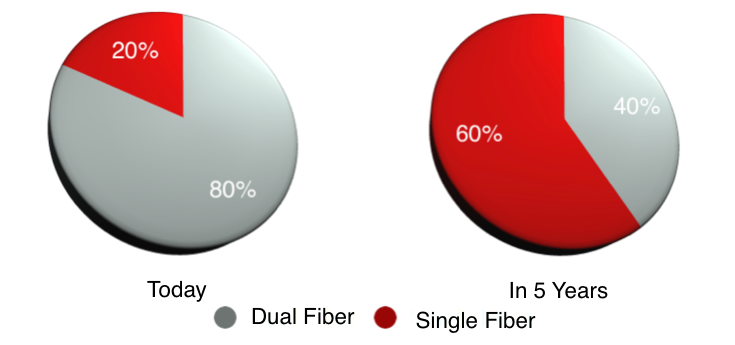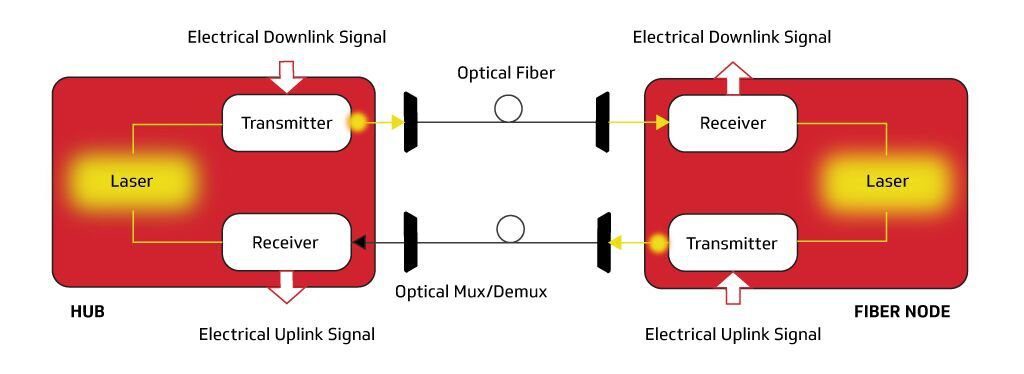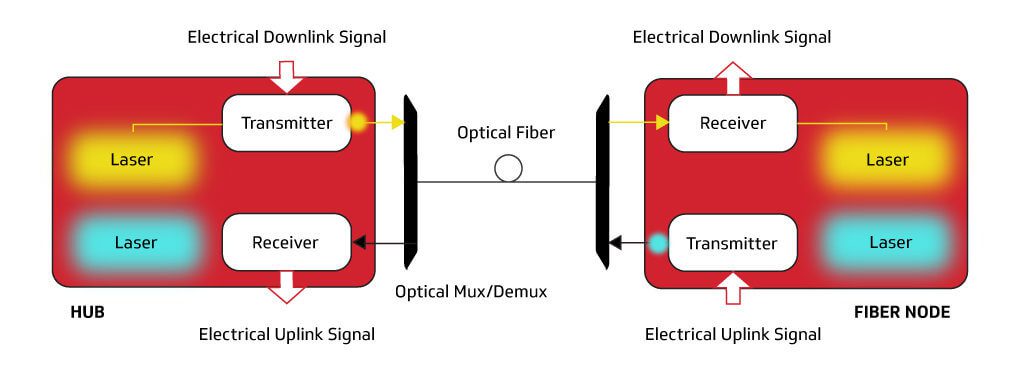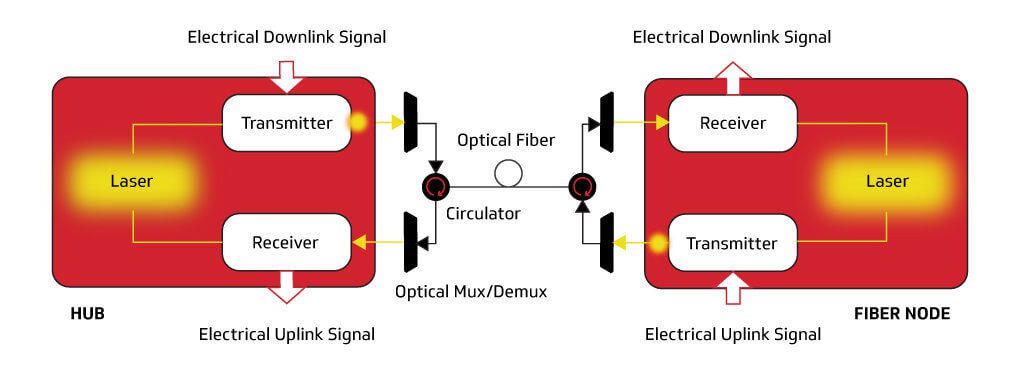Wired
Doubling up on Fiber Capacity: A Winning Strategy for Full Duplex Coherent Optics

During our 2017 Winter Conference, CableLabs announced the launch of the point-to-point (P2P) Coherent Optics specification project, potentially multiplying the capacity of each existing cable access network fiber by over 100 times and possibly indefinitely deferring new fiber builds on existing routes. Now, a new CableLabs innovation, Full Duplex Coherent Optics:
- Doubles the bi-directional capacity of each fiber
- Multiplies the capacity of each existing access network fiber by over 200 times
- Simultaneously makes Coherent Optics technology well suited for deployment in many more cable access network fibers
Why CableLabs Began the Coherent Optics Project
Most cable operators have a somewhat limited fiber count between the headend and the fiber node, so maximizing the capacity provided by this scarce resource has real economic advantages for cable operators. Getting more capacity out of the existing fibers can eliminate the need to dig more trenches to lay more fiber. This allows operators to best leverage the existing fiber infrastructure to withstand the exponential growth in capacity and services for residential and business subscribers.
Transport Methodologies
There are two fundamental topologies to achieve bidirectional P2P coherent transport:
- dual-fiber
- single-fiber
According to a recent operators survey, 20 percent of existing cable access networks use a single-fiber topology. That means that downstream and upstream transmission to nodes takes place on a single strand of fiber. It is estimated that over the next 5 years, this number will grow to 60 percent. Therefore, bidirectional transmission over a single fiber is needed for coherent signals to support single-fiber topologies and to facilitate the redundancy of optical links.

The Dual-Fiber Approach
Today, achieving bidirectional transmission in an optical domain with a single laser requires two fibers. This is the standard practice using today’s coherent optical technology. One laser in a transceiver performs two functions:
- as the optical signal source in the transmitter
- as the reference local oscillator signal in the receiver
Because of the use of the same wavelength from the same laser, a second fiber must be available for the other direction—one fiber for downstream and a second fiber for upstream.

The Single-Fiber Approach
The second typical approach is to use a single fiber but transmit at different frequencies or wavelengths, similar to the upstream and downstream spectrum split that we implement in our HFC networks. To accomplish this frequency/wavelength multiplexing approach, two lasers operating at different wavelengths are needed. Wavelength multiplexers and demultiplexers following a wavelength management and allocation strategy are needed to combine these different wavelengths over the same fiber. The second laser ends up costing a lot more than money—increasing power consumption, operational complexity, and transceiver footprint.

CableLabs’ Full Duplex Coherent Optics Approach
CableLabs proposes an alternative method to achieve full duplex coherent optics. We leverage two optical circulators on each end in a special configuration. The circulator is a low-cost, passive, but directional device—much like a traffic roundabout for cars, but this is an optical roundabout. Instead of using two fibers, a single fiber is connected for bidirectional transmission. Most importantly, instead of using two lasers, a single laser is employed for single-fiber coherent systems.

How Does It Work in a Cable?
Many scenarios in cable focus on the access environment with limited transmission distances. Unlike backbone and metropolitan coherent optical networks, access networks don’t require multiple directional optical amplifiers in cascade. By definition, the introduction of directional components hampers bidirectional transmission.
When dealing with coherent signals, we have much higher Optical Signal to Noise Ratio (OSNR) sensitivity and higher tolerance to the impairments from the spontaneous Rayleigh backscattering than intensity-modulated systems. In addition, the threshold of the stimulated Brillouin scattering (SBS) nonlinear effect is much higher because of the nature of phase-modulated signals on the reduction of optical carrier power and the increase of effective linewidth.
With this new dimension of direction-division multiplexing (DDM) in the optical domain, any coherent wavelength can be used twice, once in each direction, thus doubling the whole fiber system capacity. This full duplex implementation is not bandwidth-limited. It works for 100G, 200G and future 400G. It is also not wavelength-selective. It works for short wavelengths and for long wavelengths, and it would cover not only the entire C-Band but, with different optical sources, the entire fiber spectrum. All these features have been experimentally verified in CableLabs’ Optical Center of Excellence (OCE) over distances of up to 100 kilometers.
Impacts/Benefits of Full Duplex Coherent Optics
Full duplex coherent optics will significantly increase the value of the currently-deployed fiber infrastructure. It has been implemented in an elegant way, without the requirement of redesigning new chips for digital signal processing. This scheme can be seamlessly incorporated into the ongoing CableLabs’ P2P Coherent Optics specification effort, which will be issued in mid-2018.
Dr. Alberto Campos, a CableLabs Fellow, also contributed to this article.
--
Interested in learning more about our point-to-point (P2P) Coherent Optics specification project? A follow-up video containing more information on the technology will be posted next week. Click below to join our working group.


